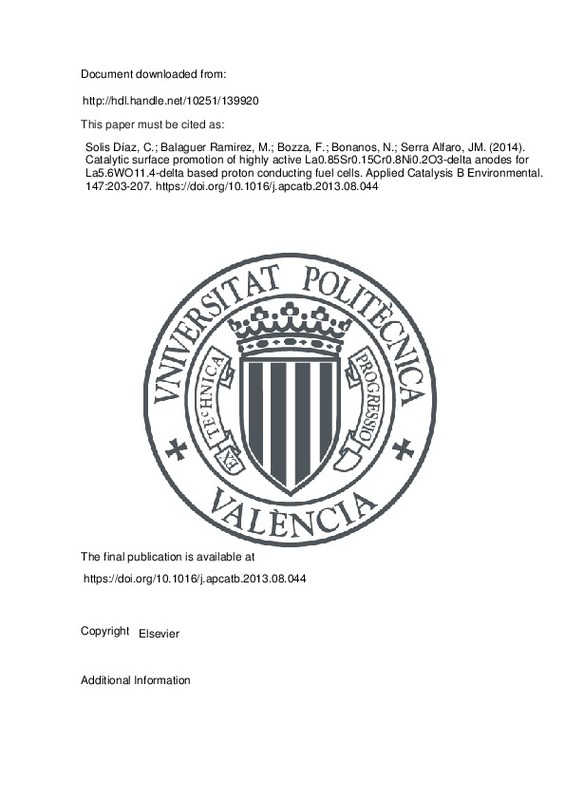JavaScript is disabled for your browser. Some features of this site may not work without it.
Buscar en RiuNet
Listar
Mi cuenta
Estadísticas
Ayuda RiuNet
Admin. UPV
Catalytic surface promotion of highly active La0.85Sr0.15Cr0.8Ni0.2O3-delta anodes for La5.6WO11.4-delta based proton conducting fuel cells
Mostrar el registro completo del ítem
Solis Díaz, C.; Balaguer Ramirez, M.; Bozza, F.; Bonanos, N.; Serra Alfaro, JM. (2014). Catalytic surface promotion of highly active La0.85Sr0.15Cr0.8Ni0.2O3-delta anodes for La5.6WO11.4-delta based proton conducting fuel cells. Applied Catalysis B Environmental. 147:203-207. https://doi.org/10.1016/j.apcatb.2013.08.044
Por favor, use este identificador para citar o enlazar este ítem: http://hdl.handle.net/10251/139920
Ficheros en el ítem
Metadatos del ítem
| Título: | Catalytic surface promotion of highly active La0.85Sr0.15Cr0.8Ni0.2O3-delta anodes for La5.6WO11.4-delta based proton conducting fuel cells | |
| Autor: | Solis Díaz, Cecilia Bozza, F. Bonanos, Nikos | |
| Entidad UPV: |
|
|
| Fecha difusión: |
|
|
| Resumen: |
[EN] La0.85Sr0.15CrO3-delta (LSC), La0.85Sr0.15Cr0.8Ni0.2O3-delta (LSCN) and LSCN infiltrated with Ni nanoparticles were tested as anodes for symmetrical cells based on La5.6WO11.4-delta (LWO) protonic electrolyte. These ...[+]
|
|
| Palabras clave: |
|
|
| Derechos de uso: | Reserva de todos los derechos | |
| Fuente: |
|
|
| DOI: |
|
|
| Editorial: |
|
|
| Versión del editor: | https://doi.org/10.1016/j.apcatb.2013.08.044 | |
| Código del Proyecto: |
|
|
| Agradecimientos: |
Funding from European Union (FP7 Project EFFIPRO - Grant Agreement 227560), the Spanish Government (ENE2011-24761, SEV-2012-0267 and CSIC Intramural 2008801093 grants) is kindly acknowledged. The authors thank M. Fabuel ...[+]
|
|
| Tipo: |
|







![[Cerrado]](/themes/UPV/images/candado.png)


